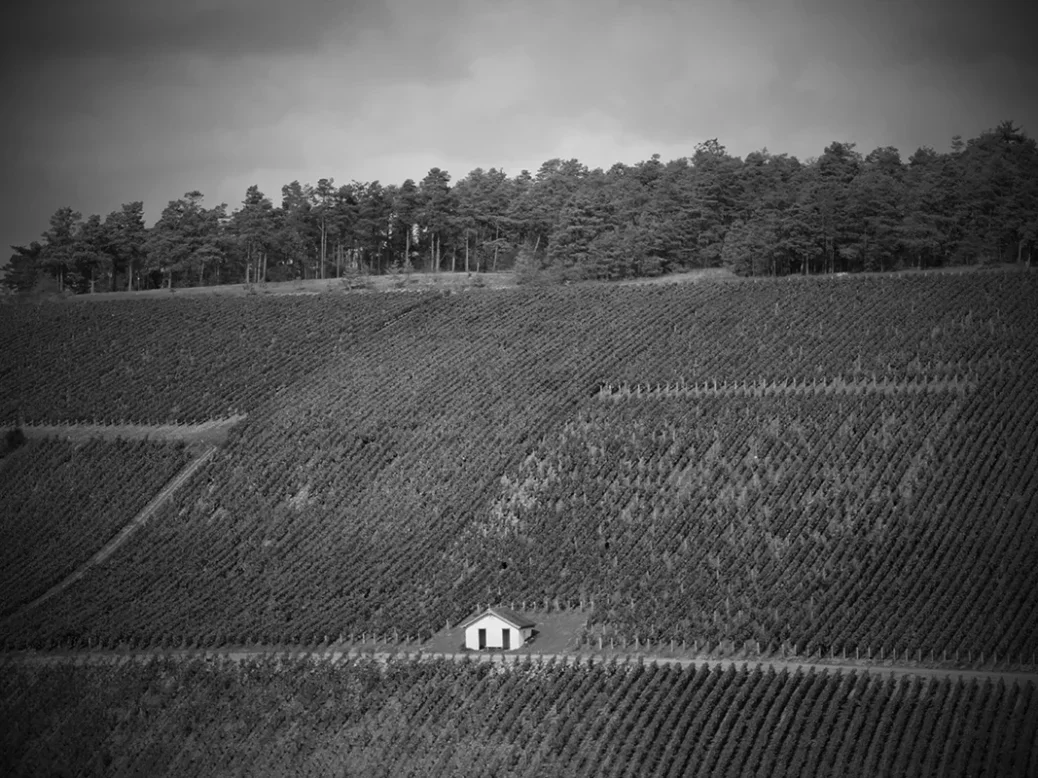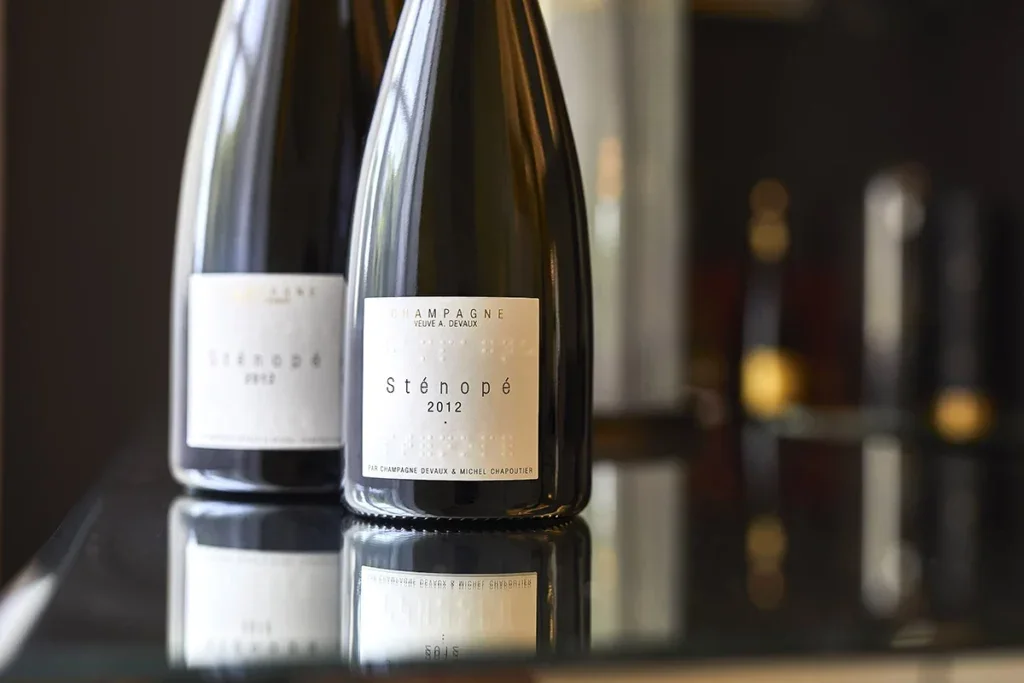
The fifth consecutive vintage of Sténopé, Michel Chapoutier’s joint venture with Devaux, is one of the collaboration’s best wines yet, says Simon Field MW.
The Côte des Bar is all too often forgotten when one turns one’s mind to Champagne. The other undervalued enclave, Sézanne, is at least contiguous with the aristocratic vines of the Côte des Blancs. One has to travel 44 miles (70km) to the south, however, preferably taking a detour to experience the medieval splendor of Troyes, before one gets to the Côte des Bar. It is pretty— a little like Beaujolais—John Clare or AE Housman pastoral, and embraced by the River Aube, the origin of its nom de plume. Aube or Bar, call it what you will, it is most certainly underrated. One has only to taste the Champagnes of Michel Drappier or Cédric Bouchard and, increasingly, Devaux, to appreciate this. And let’s not forget the famous rosés and Pinots from Les Riceys, itself the largest single commune in the entire appellation.
Enter stage right Michel Chapoutier, whose joint venture with Devaux—Sténopé—has now notched up its fifth consecutive vintage. In 2007, Michel bought two vineyards in Les Riceys— En Chanseux and Val Bazot—and he has not shied away from this particular lens of enquiry ever since. Sténopé, as a reminder, means a pinhole camera, furnishing your correspondent with a wealth of allusive potential—clichés, in both senses, included.
Michel Chapoutier is best known, of course, for his peerless Northern Rhône range, the single-parcel Hermitages in particular. A natural curiosity has taken him to Alsace, Roussillon, Australia, and elsewhere. And now to Champagne, where the distinctive clay/limestone terroir of the Aube more closely resembles that of Chablis than the vineyards of the Marne. Not a trace of the granitic austerity of Hermitage, for sure.
Chapoutier has been, by his standards, a relatively silent partner in this, allowing a healthy degree of autonomy to the long-standing chef de cave at Devaux, Michel Parisot. Michel’s two initial requests, however, were, first, that the wine should be released every year, hence the quintet from 2008 onwards; and second, that oak should play a key part in the vinification. Chapoutier is known for his adherence to single varieties in the Northern Rhône (Syrah and Marsanne), but there are no such stipulations with Sténopé, its blend usually divided equally between Pinot Noir and Chardonnay, much of the former from the Chapoutier vines in Les Riceys. Parisot takes it all in his stride, describing the project as “a beautiful adventure.” No sign, yet, of a single-vineyard—a varietal Pinot de Riceys, say—or even a Coteaux Champenois cuvée, but I am told that both have been given serious consideration.
The best the Aube can offer
The result provides us with an annual daguerreotype of the best that the Aube can offer. The decisive moment when Doisneau intimacy meets Cartier-Bresson formality, snapped up in a bottle. It is fascinating to compare Sténopé with examples from the heartland of Champagne; the style tends to be less taut and mineral-driven than the great wines of the Côte des Blancs, and maybe less overtly powerful than some of the Pinot Noir cuvées from the Montagne de Reims. The quid quo pro often lends the wines more overt fruit and a softer, more cushioned texture. Nothing especially Chablisien, it has to be said, but pleasingly different all the same.
2012 vies with 2008 for the top spot within the quintet. The challenges of hail, frost, and rain in the early part of the year were annulled by an almost perfect mid-season, revisited with an unusually damp mid-August, this almost forgotten by harvest-time. The crop was modest in size but outstanding in quality. One can really appreciate, next to its forebear, the greater concentration and, for want of a better word, focus of the 2012, which shows especially well from a magnum. It has been vinified in 300-liter oak barrels (the wood sourced locally, second fill), with lees stirring over a period of nine months.
Only the best of the first pressings (the tête de cuvée) have been used, and it has been dosed up to 5g/l. This year, Parisot decides to tell us the precise blend (previously he has been rather vague); it is 52 percent Pinot Noir and 48 percent Chardonnay, much of the latter from the village of Montgueux, which is known locally (and somewhat immodestly) as “the Montrachet of the south.” There is also a very small dose of old-vine (1913) Chardonnay from Chouilly in the Côte des Blancs, which reminds us that the wine has not exclusively been sourced in the Aube. The 2012 was disgorged in the late spring of 2021.

Tasting Sténopé
Lucky Cat restaurant, London, October 2022
Sténopé 2012 (magnum) (52% Chardonnay, 48% Pinot Noir; disgorged May 2021; dosage 5g/l)
We are privileged to taste this from both bottle and magnum, the not inconsiderable charms of the former more than redoubled in intensity in the latter. A core of southern generosity, softly spicy, with posset, apple charlotte, quince, and a hint of white pepper. The magnum is a little more closed at first; petrichor concedes slate, the Braeburns finely polished; plenty of fizz and energy—an understated gem, growing in stature with every sip. Later, this stature is put to the test by Lucky Cat’s Japanese-themed hors d’oeuvres; but neither the tuna and shiso tartare nor the beef tataki overwhelm. On the contrary, the Sténopé rises to the challenge with spicy gusto. The aperture should stay open for quite a while. | 93






